- Home
- Michael Newton
How to Write Action Adventure Novels Page 5
How to Write Action Adventure Novels Read online
Page 5
He missed the usual landmarks, did not recognize the storefronts sliding past his tinted window. Leaning forward, he pressed the button on the intercom that linked him with the driver.
“Why are we going this way! Thomas never comes this way.”
The driver’s eyes were studying him, not without a trace of curiosity, in the rearview mirror.
“Short cut,” said the Executioner, before he put the pedal to the floor.
From time to time, protagonists can even sit the final action out, off-stage. The conclusion of The Trial (Gold Eagle, 1986) focuses on the major heavy, rancher Ethan Peck, and his comeuppance in the fallout from an unsuccessful bid to frame the story’s hero on a murder charge:
He felt the pistol’s weight tugging at his belt, inviting him to try his hand. It would be suicidal, certainly. The scattergun was pointed at his chest, and he could never hope to beat the gunner’s time. It was preposterous. Insane.
And it was still the only game in town.
He knew the Duke would try it in his place. The Duke would never have surrendered to some snot-nosed city boy, no matter if the snot-nose had a cannon leveled at his chest.
‘You ever go to movies, boy!”
The snot-nose looked confused, but he was holding steady on the scattergun, his knuckle white with tension on the trigger. Counting down his life in microseconds now, the rancher knew precisely what he had to do.
And he was grinning when he made his move.
Whichever way you go—the guillotine approach or a more leisurely retreat—your resolution must provide the reader with at least a semblance of reality and logic. If you plan on letting Mother Nature take your heavies out with a convenient avalanche or tidal wave—or, as in Balefire, with a killer shark that turns up in an early chapter and again at the conclusion, with no visible connection between the two events—you might be wise to brace yourself for a rejection.
Outlines vs. Inspiration
Working authors universally approach their goal—a finished novel—via one of two established routes. A goodly number chart their stories with the help of outlines, while another faction trusts in what I like to call the “crisis method.” Many writers—and some damned successful ones, at that—are loathe to plot their stories in advance, abhorring the “restrictions” of an outline or synopsis, falling back on mood and inspiration while the story “writes itself.”
Don Pendleton, creator of The Executioner, occasionally wrote his hero into corners, literally trusting dreams to furnish the solutions. In Panic in Philly (Pinnacle, 1973), Mack Bolan is up a phone pole, tapping Mafia lines, when police materialize below. He’s cornered, sworn to never shoot a cop, and Pendleton admittedly had no ideas for his escape until, he says, the black-clad warrior turned up in a dream. No words were spoken; Bolan merely sat and stared, but Pendleton awoke with an abiding urge to hit the keyboard of his IBM. The answer? Bolan detonates explosives in his van, parked up the street, by means of a remote control switch on his belt, then leaps to safety in a nearby tree while everyone is scattering for cover.
Four years later, in the midst of Savage Fire (Pinnacle, 1977), Don walked his hero—posing as a mobster—into the heart of an enemy stronghold. No one on earth can see through his disguise, except perhaps for Augie Marinello, a capo mafioso blasted and presumed dead in an earlier episode. As Don explained to me, “I had no idea who would be in that room when Bolan walked in, but it turned out to be Augie.” This time, a swan dive through the nearest window saves the day, but only after Bolan triggers rockets, launched via remote control from his nearby “warwagon,” to intercept the gunners on his tail.
Don Pendleton is not alone in hewing to the “crisis method” in his work. Prolific horror writer Ramsey Campbell gets by with a brief synopsis, which he uses merely as a “safety net,” preferring “to let the novel develop itself as it takes on more life.” No less a paragon than Stephen King has branded outlines as “the refuge of bad fiction writers,” but he didn’t hesitate to use one for his preparation of The Talisman, with Peter Straub, in 1981.
Most pros would no more think of sitting down to write without some kind of outline than they would consider driving coast-to-coast without a map, or going naked to the local supermarket. J. N. Williamson, who has completed thirty-seven books in a decade, states (in How to Write Tales of Horror, Fantasy & Science Fiction) that, “Good plots … happen, more often than not, because of well-planned outlines.” John Gardner does not sneer at inspiration, but he still contends (in On Becoming a Novelist) that, “Sooner or later the writer has no choice but to figure out what he’s doing.” Veteran mystery editor Barbara Norville regards a detailed outline, prepared in three or four stages, as “the backbone of the book” (Writing the Modern Mystery). Ken Follett has revealed, in published interviews, that he outlines each book repeatedly, inserting greater detail as he goes, incorporating character descriptions, bits of dialogue, whole action scenes, until the final product reaches 30,000 words or more! With outline in hand, he begins to write, and finds it necessary to revise his manuscript only once— compared to an average two or three drafts claimed by Stephen King.
I personally would not care to start on any book without a clear idea of where the plot and characters are going. I may not adhere religiously to the initial outline—massive chunks may be revised or cast aside before I’m finished—but at least it’s there. So far—knock wood—I haven’t found myself out thrashing in the darkness, flirting with disaster (not to mention writer’s block) while waiting for a dream to solve the riddle of a crucial character’s survival.
There are several clear advantages to working from an outline. First, it helps you keep your characters and story line on track, reducing opportunities for meaningless digression. Action stories move, and while an editor won’t fault you for developing your characters, providing background and the like, you can’t afford too many of the famous Ian Fleming thirty-five-page gourmet meals or golf games, either. It is also possible to lose a character, from time to time, in the excitement of the chase. (I’ve done it once or twice, but I console myself with memories of Dirty Harry Callahan, who can’t remember if he’s fired six shots … or only five.) These kinds of technical snafus are easily avoided if you keep a weather eye on your synopsis as you work.
Another benefit of using outlines is elimination of the “do or die” mentality that hovers over writers working by the crisis method. If you’ve sketched your hero’s movements in advance, you won’t be forced to hurl him out of seventh-story windows, praying that a too-convenient awning will be waiting for him down below. It usually shows when writers let their stories take them by surprise, and the “solutions” they contrive to unexpected hazards often come out sounding corny and contrived, if not downright cartoonish. It may not hurt your hero’s reputation to rely on Fate for his salvation once or twice—I’m talking once or twice within a series, not a single story—but if he or she habitually blunders into peril unprepared, you’re dealing with a clumsy idiot.
Aside from helping out with characters and sticky situations, outlines let a writer pace a story properly, and they can also help with sales. Most editors (and many agents) don’t have time to wade through stacks of unsolicited manuscripts, but they often insist upon a finished outline or synopsis, which includes the ending of your story. Unless you’re Norman Mailer, pulling down $4 million for the mere announcement that you have a book in mind, don’t plan on selling anyone a pig in a poke. Editors will want to see your story, verify the logic of its resolution, and be certain that it hasn’t been done countless times before by other writers.
Working Outlines
The synopsis you submit to editor or agent may take several forms, and we’ll discuss particulars of the submission at a later point. For now, I’ve reproduced below an outline for an episode of the Executioner series, which was purchased by Gold Eagle Books in 1988, as Night Kill.
_______________
We open with a human sacrifice in progress, t
he intended victim drugged in preparation for the deed. In spite of her sedation, she is vaguely conscious of the hooded figures circling a makeshift altar where she lies spread-eagle, as an offering to Satan. Although terrified, she is unable to resist, and consciousness deserts her as the high priest draws his knife, the blade descending … .
Join Mack Bolan as he keeps a date arranged by Hal Brognola. Mack is meeting Amos Carr, an ex-policeman presently employed as a consultant in the field of cult-related crime. A self- taught expert, drawn to study Satanists and other fringe religions by his own experience with groups which prey upon impressionable youngsters, Carr is tracking what he thinks may be a nationwide Satanic network, linked to human sacrifices in a dozen cities, trafficking in drugs and child pornography while wooing countless teenagers through messages included in the lyrics of Satanic “heavy metal” tunes. The Executioner is skeptical at first, but Carr has slides, police reports, the affidavits of defectors and survivors, all apparently connecting “random’’ murders with the travels of a leading heavy metal band, “Apocalypse.”
By no coincidence, the band is playing that same evening, in the town Carr has selected for his meet with Bolan. They check out the action, Bolan alternately fascinated and repulsed by what he hears and sees. The audience is whipped into a frenzy by their heroes on the stage, and Carr fills Bolan in on the connection of the singers to a noted author (and Satanic “priest”) named Lucian Slate, who travels with them on retainer as their counselor and “spiritual guide.”
Meanwhile, on the other side of town, a rather different sort of gathering is underway. Televangelist Jordan Braithwaite has brought his salvation road show to the city, hot on the heels of Apocalypse and their message of darkness. As we meet Braithwalte, he is preaching hellfire and communing with the Holy Ghost on wavelengths only he can tap, producing wild reactions from his audience and “healing” carefully-selected shills to keep the money flowing as collection plates axe passed.
Before the night is over, there will be another sacrificial murder of a teenaged girl—a member of the heavy metal audience which heard Apocalypse perform short hours earlier. Next morning, Carr and Bolan view the crime scene, rubbing shoulders with police, who are predominantly hostile to the notion of Satanic cultists in their midst. They would prefer to blame a “normal maniac,” but one or two have heard Carr’s message in the past, and they are starting to believe.
Carr introduces Bolan to an ally, Cassandra Poole, a “white” witch who takes her religion seriously and despises practitioners of the black arts. She has worked with Carr before, and agrees to brief Bolan on the local occult scene, giving him pointers on which groups to watch for and which it is safe to ignore. Her briefing extends into a tour of local occult bookshops and supply stores, with introductions to a few practitioners, while Carr strikes off on business of his own. When they regroup, Carr mentions the “coincidence” of Jordan Braithwaite’s appearance in cities where Apocalypse has played and victims have been slain. It may be nothing more than shrewd publicity, but Bolan is no great believer in coincidence.
While Bolan trails Cassandra to a meeting of her coven, delving deeper into the occultic scene, we meet Satanic hit man Owen York, a veteran of the Manson days and unidentified participant in New York’s “Son of Sam” assassinations, lately on the payroll of an underground “black” network spanning the United States. A zealous worshipper, York is a pragmatist, as well. His roving team of killers love their work, hut they are also in it for the money they are paid by Lucian Slate and his clandestine hackers.
As Bolan, Carr, and beautiful Cassandra work the underground in search of suspects, they are also setting off alarms, alerting York and Slate to danger in the wind. Apocalypse has one more gig to play before they hit the road, and Slate decrees that any snoopers who cannot be frightened off must die, before they ruin everything. A phony lead lures Amos Carr into an ambush, but he battles clear and races off to warn the others of impending danger. He comes too late for Cass, arriving as York’s cronies carry her away, and Carr is wounded when he tries to intervene. He will survive, and Bolan’s hasty meeting with the injured man is all he needs to make him join the band, backstage.
A Bolan heart-to-heart with the Apocalypse musicians leads him to the site where Cass is scheduled to be sacrificed. The Executioner’s arrival foils York’s plan, resulting in the deaths of Slate and his accomplices. Before he dies, however, Slate will name his secret financier and boss as “Reverend” Braithwaite. An unprincipled manipulator, con man, and prospective politician on a “Christian” platform, Braithwaite has employed the Satanists much as he uses phony cripples in his own revivals—to create a mood, provoke desired responses from his audience, and bring the masses “back to God” … or, in this case, to Jason Braithwaite.
In the final chapter, Bolan pays a visit to the reverend, sending Braithwaite on to meet his maker—whom, we may suspect, is not amused. An epilogue finds Amos mending nicely, and perhaps the Executioner can spare some time for Cass, to search for magic of a different kind.
_______________
Within the space of roughly three typed pages, double-spaced, I’ve set the story rolling with an action scene, delineated major characters, and laid out every major action scene from the appearance of our hero through the climax and a quasi-happy ending. (Inspiration for the story, incidentally, was drawn from recent media reports on Satanism and the feet of clay displayed by leading televangelists.) That general framework gave me ample room to throw my characters some gruesome curves and keep the readers guessing—just so long as I was never in the dark.
Okay, this isn’t English 101; you’re not required to use an outline, and assuming that you do, there are no hard, fast rules about the form you should employ. I do not recommend the rigid outlines taught in school, with Roman numerals and whatnot, as the basis for a novel, though they come in handy on occasion for nonfiction work. The plain fact is that if you’re wise and talented enough to be a writer in the first place, you can choose the kind of outline or synopsis that works best for you.
In length and structure, working outlines range from Follett’s 30,000-word novellas to the simpler, much shorter version shown above. J. N. Williamson suggests a breakdown of the outline into chapters, while Ray Obstfeld—author of The Warlord series and assorted other novels—advocates the “slap-dash” outline, breaking up a story into scenes, with brief descriptions of the action found in each. Once I’ve progressed beyond a sales pitch to the actual production of a finished manuscript, I use a hybrid of the latter methods, laying out my story in sequential chapters, plotting sketchy scenes within each segment, finally putting meat and sinew on the bones when I sit down to write.
Production of a useful working outline should not be a problem if you follow certain basic steps. First off, you’ll need to brainstorm, starting with a general story line in mind and letting your imagination run until it’s tired, creating characters and coughing up scenarios that meet your needs. At this point, you’re collecting anything and everything; there’s time enough to cut the dead wood later, when your plot has taken shape.
Sketch profiles of your major characters as they appear, and write them down. The names aren’t crucial yet; a simple “A” or “B” will do, as long as you can start to picture them and get a feel for who they are, their personalities, perversions, quirks, and foibles. Scribble down the physical descriptions if you’re moved to do so—anything from height and hair and eyes, to scars, tattoos, peculiar accents. If you’re dealing with a pyromaniac who shaves his head and loves vanilla ice cream, you should know it going in.
Jot down your various scenarios on index cards, including any details you can think of. “A shoots B” may say it all for now, or you may have a special gun in mind, a certain setting that will make or break the scene. If bits of dialogue present themselves, go on and write them down; six months from now, that snappy phrase may not be rattling around inside your head precisely when you need it. Don’t concern yours
elf with linking scenes together or compiling them in order at this point; we’re free-associating here, and if you try to run straight through the story start-to-finish on your first time out, I’m betting that you’ll choke. (I do, invariably.) In the end, some scenes will work while others fail; a few will be discarded altogether, fresh ones added in their place, but none of this should faze you while you’re still in brainstorm mode.
When your creative process finally stalls, it’s time to sort the index cards and put your various scenarios in some apparent order. Certain bits may naturally place themselves—a perfect prologue, or the major heavy’s death scene, for example—but you’ll find that many more are flexible. Each separate card need not a chapter make; a handful may be merged, or one may be expanded into several chapters. You’re the boss.
You may have dreamed up subplots that no longer function logically within the living story, and if so, you must be ruthless, amputating those that don’t belong. Conversely, gaps will almost certainly appear at points within the outline, begging to be filled with characters and action. Two scenarios that didn’t fit together previously may work out, provided that you find a proper bridge. Ideally, filler for the gaps should make some contribution to the gathering momentum of the story. Simple padding—sex and violence thrown in randomly to make a word-count—is among the quickest ways to see your book go up in flames. (Remember all the times you’ve felt ripped off by cheapo exploitation films, with pointless shower scenes included merely to display some skin? Same principle, except that here, your editor may holler “Cut!” before the readers have a chance to feel ripped off.)
Delineating Chapters
When it came time for me to write Night Kill, I broke my short synopsis down as follows, making it a useful working outline.
_______________
NIGHT KILL

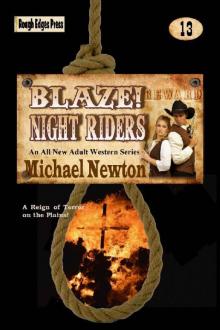 Blaze! Night Riders
Blaze! Night Riders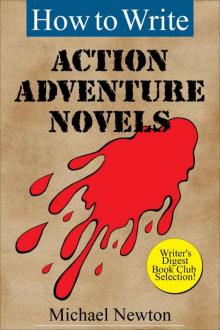 How to Write Action Adventure Novels
How to Write Action Adventure Novels Blaze! Bad Medicine
Blaze! Bad Medicine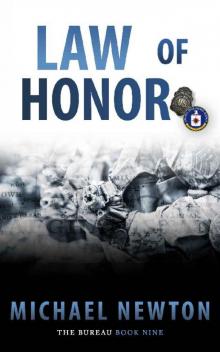 Law of Honor
Law of Honor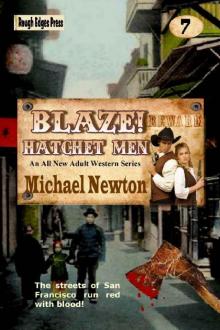 Blaze! Hatchet Men
Blaze! Hatchet Men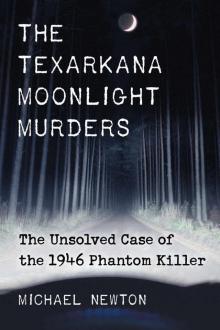 The Texarkana Moonlight Murders
The Texarkana Moonlight Murders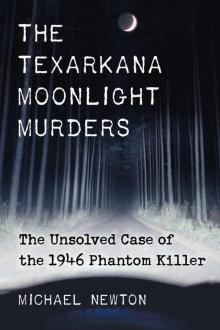 The Texarkana Moonlight Murders: The Unsolved Case of the 1946 Phantom Killer
The Texarkana Moonlight Murders: The Unsolved Case of the 1946 Phantom Killer